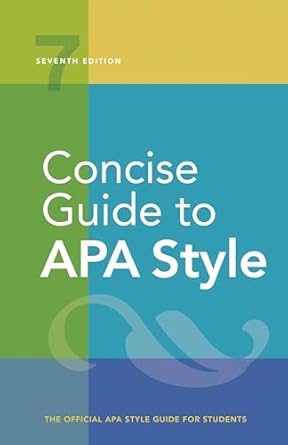[toc]
copyright permissions guide for academic writing
Concise Guide to APA Style: 7th Edition (OFFICIAL)
Page 227 Review
Understanding Copyright and Permissions in Academic Writing
Navigating copyright laws and permissions is crucial for academic writers.
This ensures proper attribution and avoids legal issues when using materials from other sources.
The following analysis delves into the guidelines provided in the text, offering clarity on when and how to acknowledge copyrighted works.
General Guidelines for Reprinting or Adapting Materials
The core principle highlighted is that while in-text citations and reference list entries suffice for most cases, certain materials necessitate a more comprehensive acknowledgment.
According to U.
S. copyright law, “reprinting or adapting certain kinds of works (e.g., figures published in journal articles, images from websites, lengthy quotations) requires a more comprehensive acknowledgment of the copyright status of the reprinted or adapted work in the form of a copyright attribution.” This attribution provides details about the original work and identifies the copyright holder.
Reprinting vs.
Adapting
The text differentiates between reprinting and adapting. “Reprinting means reproducing material exactly as it appeared originally, without modifications, in the way in which it was intended to be understood.” On the other hand, “Adapting refers to modifying material so that it is suitable for a new purpose (e.g., using part of a table or figure in a new table or figure in your paper).” Whether reprinting or adapting, a copyright attribution is essential, replacing the typical author-date in-text citation.
Importantly, “each of these works also should appear in the reference list.”
The Need for Explicit Written Permission
The text emphasizes that, in some situations, attribution alone is insufficient. “For a subset of cases (see Section 8.38), authors also need to seek and obtain explicit written permission from the copyright holder to reprint or adapt the material.” Obtaining this permission can be a lengthy process, and there’s no guarantee it will be granted.
This process is a legal requirement, not merely an APA Style guideline. “These policies are a matter of law, not specifically of APA Style, and writers, including students whose work will not be formally published, should follow them.”
Materials Requiring Copyright Attribution
The text provides examples of materials that often require a copyright attribution and may also require permission: “The following are examples of materials that authors often want to reprint or adapt that may require a copyright attribution; they may also require permission (see Section 8.38).
Other materials may also require a copyright attribution and permission before they can be reprinted or adapted, such as data sets, songs, poetry, and art.”
Specific Examples: Figures, Tables, and Images
Visual displays are specifically highlighted. “Most types of visual displays require a copyright attribution to reprint or adapt, including tables and figures published in journal articles, books, reports, webpages and websites, and other works, as well as images from the internet such as illustrations, infographics, photographs, screenshots, and most clip art.” The need for permission varies depending on the work’s publication and copyright status.
A key challenge arises with images from the internet. “Copyright ownership and permission status can be particularly difficult to establish for images downloaded from the internet, but it is still necessary in most cases to check the status.” This underscores the importance of thorough due diligence in determining copyright status, even for seemingly accessible online content.
Key Takeaways
In conclusion, understanding copyright and permission is essential for ethical and legal academic writing.
The guidelines emphasize the importance of copyright attribution for reprinted or adapted materials, especially figures, tables, and images.
Furthermore, authors must be aware of situations requiring explicit written permission from the copyright holder.
Careful consideration of these factors will help writers avoid copyright infringement and ensure proper credit is given to original sources.
Always err on the side of caution and seek clarification when unsure about copyright status or permission requirements.
Buy full ebook for only $18: https://www.lulu.com/shop/american-psychological-association/concise-guide-to-apa-style-7th-edition-official/ebook/product-rmzpq54.html?page=1&pageSize=4
Copyright Permissions Guide For Academic Writing
Read more: Analyzing Data Tables: Key Insights & Interpretation

